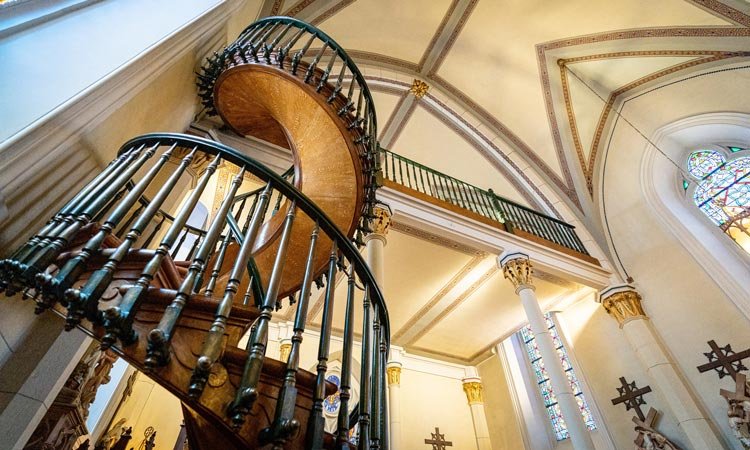Around 1880, a boarding school for girls run by the Sisters of Loretto near Santa Fe, in the American state of New Mexico, needed a stairway to connect the choir loft to the ground floor 20 feet (6.1 meters) below. Several builders were called in to look at it and assess whether they could do the job, but no one wanted to take it on because there wasn’t enough room on the ground floor to accommodate a standard type of stairs.
So the sisters prayed a novena to Saint Joseph for nine days asking for a staircase. The novena tradition originates in the nine days that the early disciples devoted to prayer as they waited for the coming of the Holy Spirit at Pentecost,1 and is also practiced in the Lutheran, Anglican, and Orthodox traditions.
On the ninth day, a carpenter showed up at the door ready to work. He was riding a donkey and had only three basic carpentry tools. He labored for six months totally alone, bending the wood patiently into shape to construct the staircase, and then he disappeared before the celebration party that they had planned in his honor at which he would have been paid. The sisters asked the local lumberyard and townspeople, but no one had seen him.
The helix staircase is unusual, even unique, in several ways. First, it lacks a supporting central column, and it was made without the use of nails or screws—only glue and wooden pegs. It has 33 steps, which remind us of the 33 years that Jesus Christ lived on earth. Even the wood is uncommonly dense and the tree it comes from hasn’t yet been identified, although an analysis by a Navy lab suggests it seems to be a relative to a spruce tree that grows in Alaska.
One carpenter remarked, “It’s a magnificent work of art that humbles me as a master carpenter. To create a staircase like this using modern tools would be a feat. It’s mind-boggling to think about constructing such a marvel with crude hand tools, no electricity and minimal resources.”
In recent times, about a quarter of a million visitors come each year to admire the staircase and learn about the theories regarding the identity of the mysterious visiting carpenter. Personally, I think one of the main points of the story is that the sisters’ prayers were answered. It reminds me of the stories that Jesus told of the value of importunate prayer—a woman continually pleading her case to a stubborn judge until her request is granted, and then a man who repeatedly disturbs his friend at midnight asking for bread for his visitor.2 This parable teaches us about the need to pray at all times and not lose heart, but trust in God to come through for us.3
Maybe you have your own “staircase” that needs to get built but you have no idea how it will come together. Like the sisters, you can pray, and keep on praying, until the Master Carpenter works the miracle that only He can.
